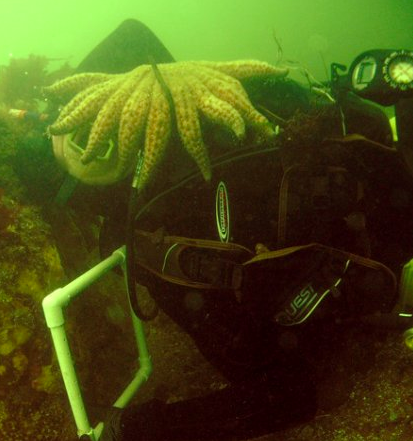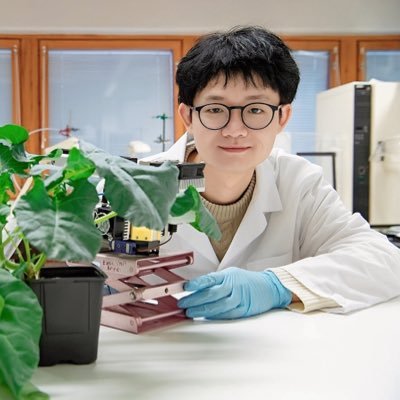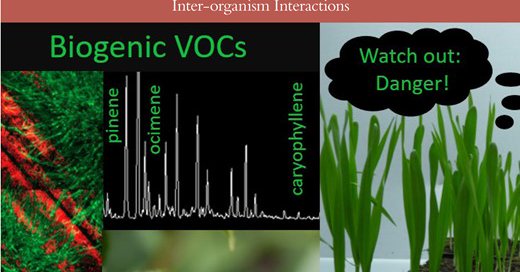
Patrick Grof-Tisza
@TiszaPatrick
Followers
106
Following
42
Media
4
Statuses
39
Ecologist and outdoor enthusiast, especially curious about (but not limited to) plants and insects. (he/him/his)
Neuchâtel, Switzerland
Joined August 2013
It appears that field work on plant volatiles does not enter high-IF journals #sustainability #biocontrol #biologicalcontrol #VOCs #plantvaccines
0
2
11
Today will be a great day at #ISCE2023! We will begin with 2 special lectures; Ted Turlings will speak about what he learned from the late Jim Tumlinson during his career & Baldwyn Torto will detail Nature-based crop protection solutions for below and above-ground plant pests!
0
4
15
RT @JessButler@mastodon.social 🔖 Statistical code in a high-impact medical journal A journal started asking authors to submit code with their manuscripts. They then analysed the next 314 papers accepted 87% denied using code, even when publishing substantial statistical (1/3)
1
5
5
Excited to share the results of a collaborative project within @JDBlande's group at @UEF_EnvBio. Elevated ozone can disrupt foraging behavior in bumblebees likely due to the degradation of floral volatiles used as cues.
0
1
3
UC Berkeley's summary/press release on our recent paper with @ecologyofgavin and others measuring forest decline in the Sierra due to drought and fire
A new study by @UCBerkeley and @usfs_rmrs found that a third of southern Sierra conifer forests have died in the last decade. That habitat loss may hold grave consequences for wildlife like the California spotted owl and the Pacific fisher. Read more:
1
2
13
Ozone pollution disrupts plant–pollinator systems: Trends in Ecology & Evolution
0
3
2
It's finally out! Sequestration of cucurbitacins from cucumber plants by Diabrotica balteata larvae provides little protection against biological control agents @FARCE_lab @SpringerNature
link.springer.com
Journal of Pest Science - Cucurbitaceae plants produce cucurbitacins, bitter triterpenoids, to protect themselves against various insects and pathogens. Adult banded cucumber beetles (Diabrotica...
1
2
13
It was a fun morning discussing papers by @Saab95adventure and @sarahgravem in our Ecological Interactions seminar at the @UniNeuchatel. Thanks for the inspiring work!
1
0
2
The idea that biodiversity drives ecosystem function is deeply engrained in ecology, and has been applied to agriculture. A rigorous analysis of causation vs. correlation challenges this: "there is no causal relationship found between biodiversity and ecosystem functioning."
30
166
633
How parasitoids search for hosts has been intensively investigated, but how do they search for food? Which flowering resources are attractive? And what is the role of microbes? We raise more awareness in biocontrol @AnnualReviews
https://t.co/Hod5sYz9FZ
0
29
83
#Strawberries are the best🍓! But what if they are fertilized with #herbicide #glyphosate contaminated manure?🐓 Check out our new collaborative study between 4 Departments @UniTurku @NCRG_UTU @BiologyTurku @UTurkuBiodiv #UTUFoodChem
https://t.co/nhNVI5KZWl
0
6
18
Interested in conifers defense against weevils mediated by plant-plant interactions ? 👉See our latest paper https://t.co/ak6y1ZZnDa
@JDBlande @MKivimaenpaa @royalsociety
royalsocietypublishing.org
Conifers are dominant tree species in boreal forests, but are susceptible to attack by bark beetles. Upon bark beetle attack, conifers release substantial quantities of volatile organic compounds...
1
3
10
Soil microbiota explain differences in herbivore resistance between native & invasive populations of Lupinus polyphyllus, & alter leaf VOC emissions accordingly👇 @ainokalske @JDBlande @RamulaSatu @TCSMT_UTU @UniEastFinland @UniTurku
besjournals.onlinelibrary.wiley.com
These results demonstrate the ability of Lupinus polyphyllus to associate with and benefit from putatively novel soil microbiota including rhizobia, which has likely contributed to its invasion...
0
11
21
Volatile-mediated associational resistance (VMAR) is potentially common as few investigations of plant communication attempt to distinguish between active (volatile-mediated induced resistance) and passive (VMAR) responses. Read about our new work here:
0
0
3
Research has shown that some plants can differentially respond to volatile cues from kin over those from strangers. Threshold responses from adsorbed and reemitted VOCs from plants of a similar volatile chemotype provide an alternative explanation to kin recognition.
1
1
11
Happy to see our article featured on the cover of @TrendsPlantSci !! 🥳 @kari_saikkonen
#glyphosate #herbicides #ecosystem
April issue is out: read FREE: Herbicide effects on Species Interactions (from the cover) @benecofox ; Bridging the Genome-to-Phenome Gap; Sugar and Nitrate Sensing; The Reactive Oxygen Species–Ethylene–Sugar Triad; Nitrogen Systemic Signaling & much more https://t.co/S7yERLSAO0
1
3
23
Volatile compounds—the language of all kingdoms?
academic.oup.com
Volatile organic compounds (VOCs) were originally identified as communication compounds between plants and insects. Today, we know that VOCs are released b
0
7
24



















